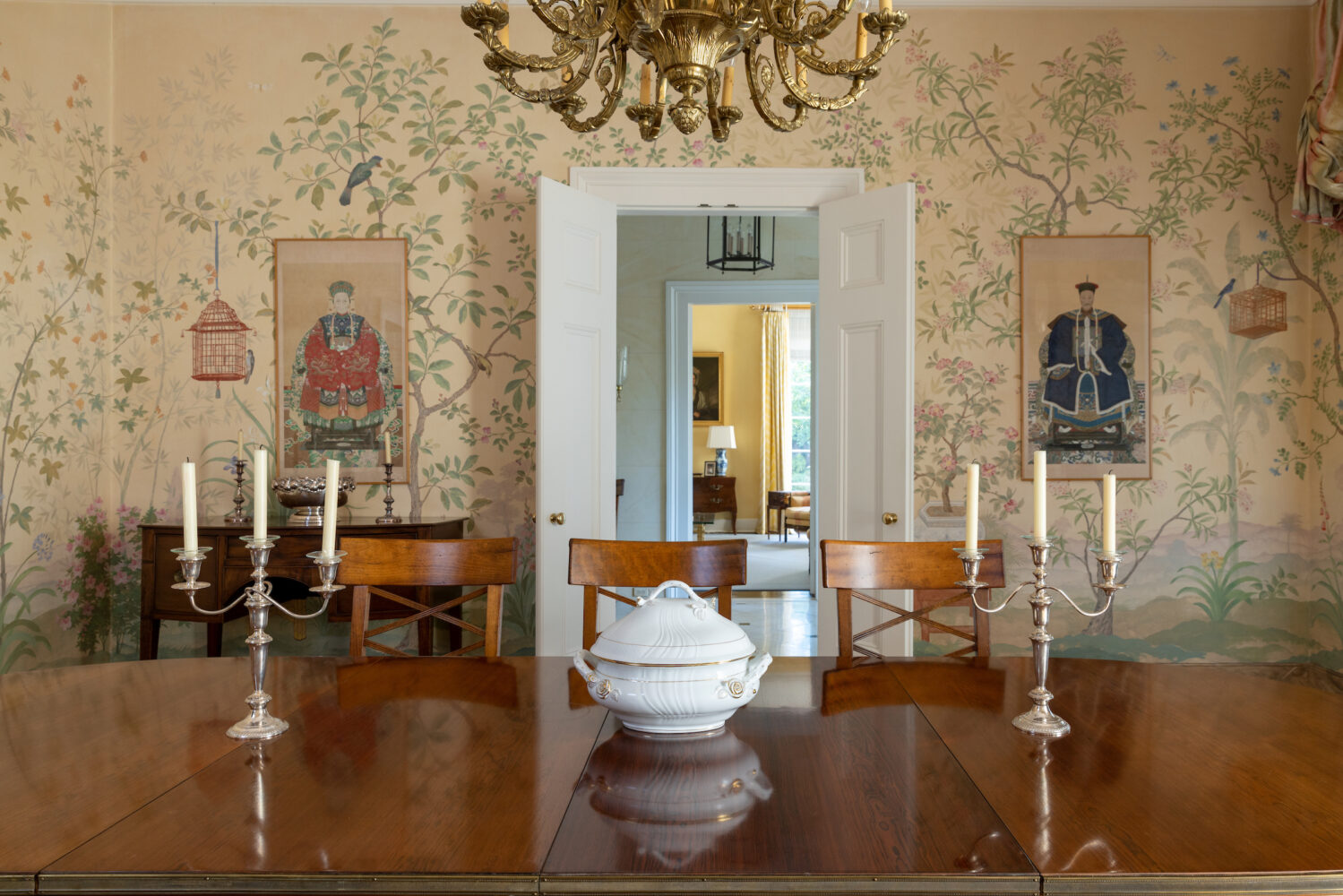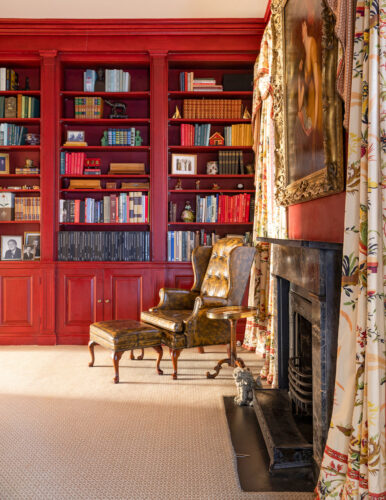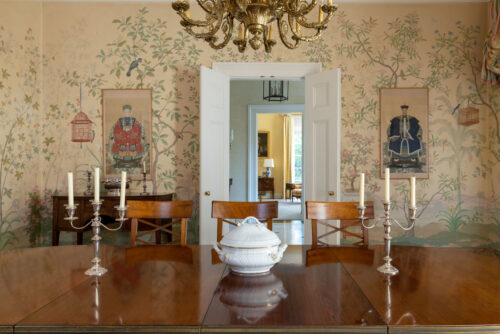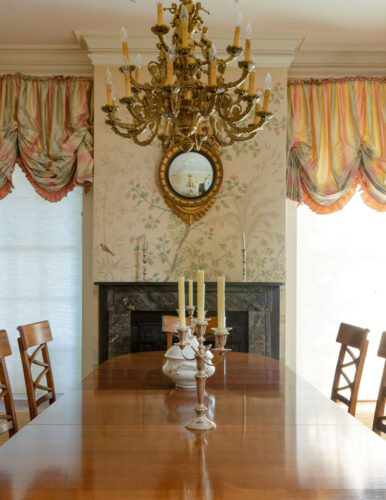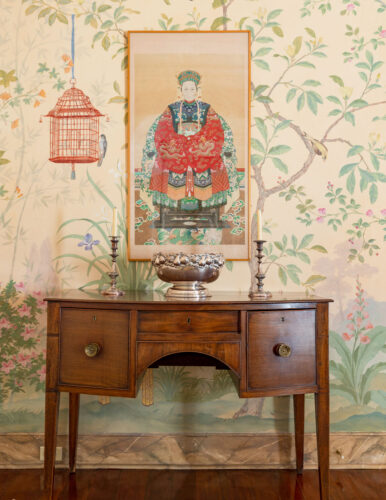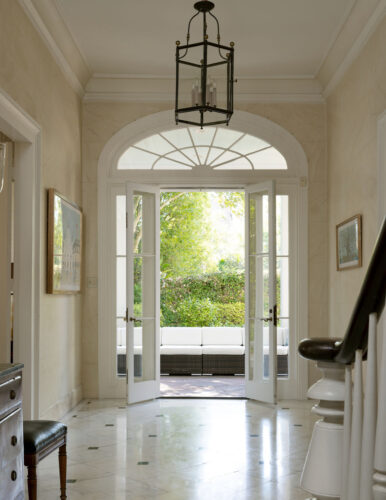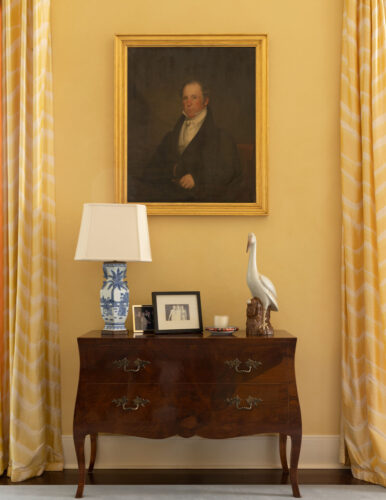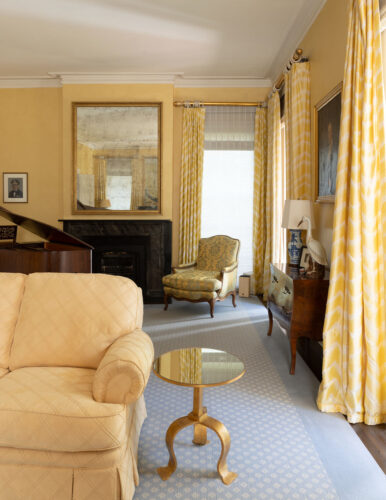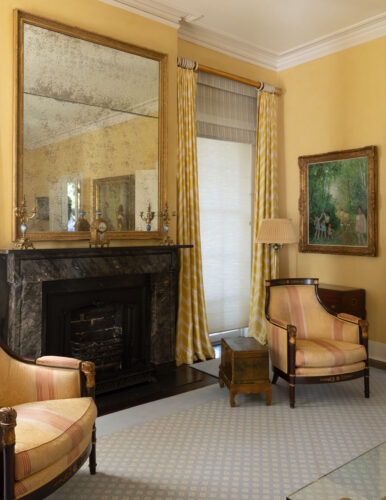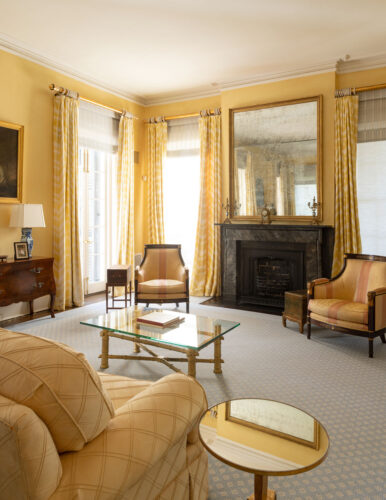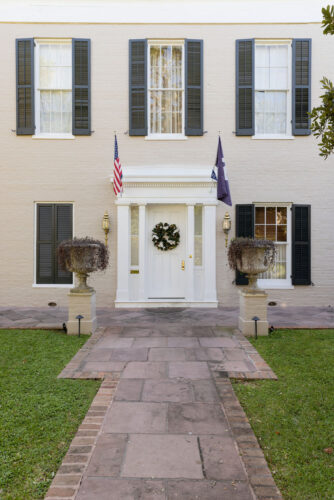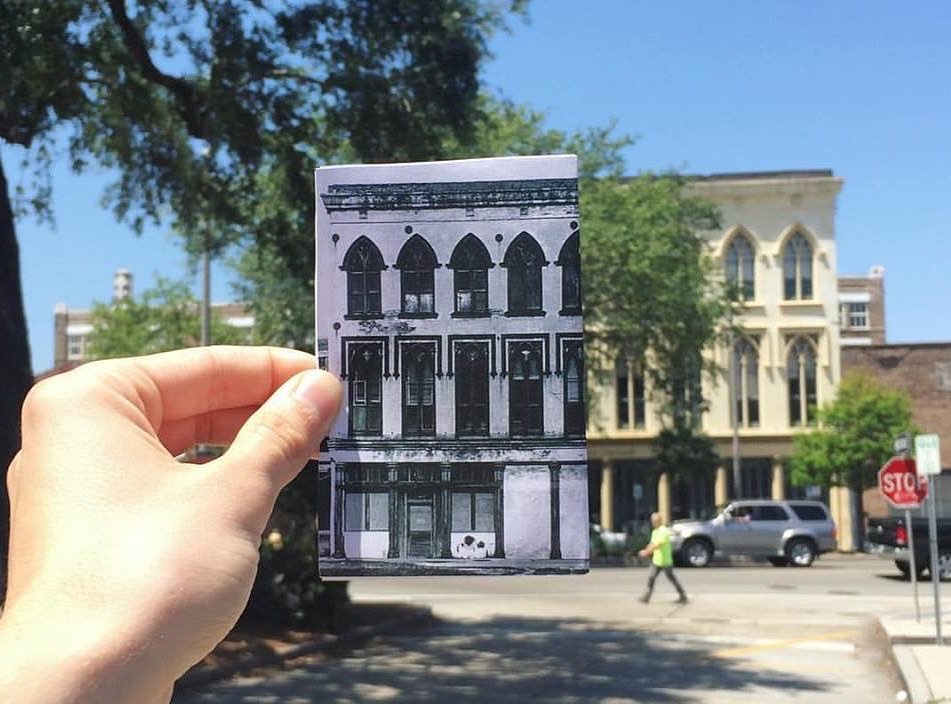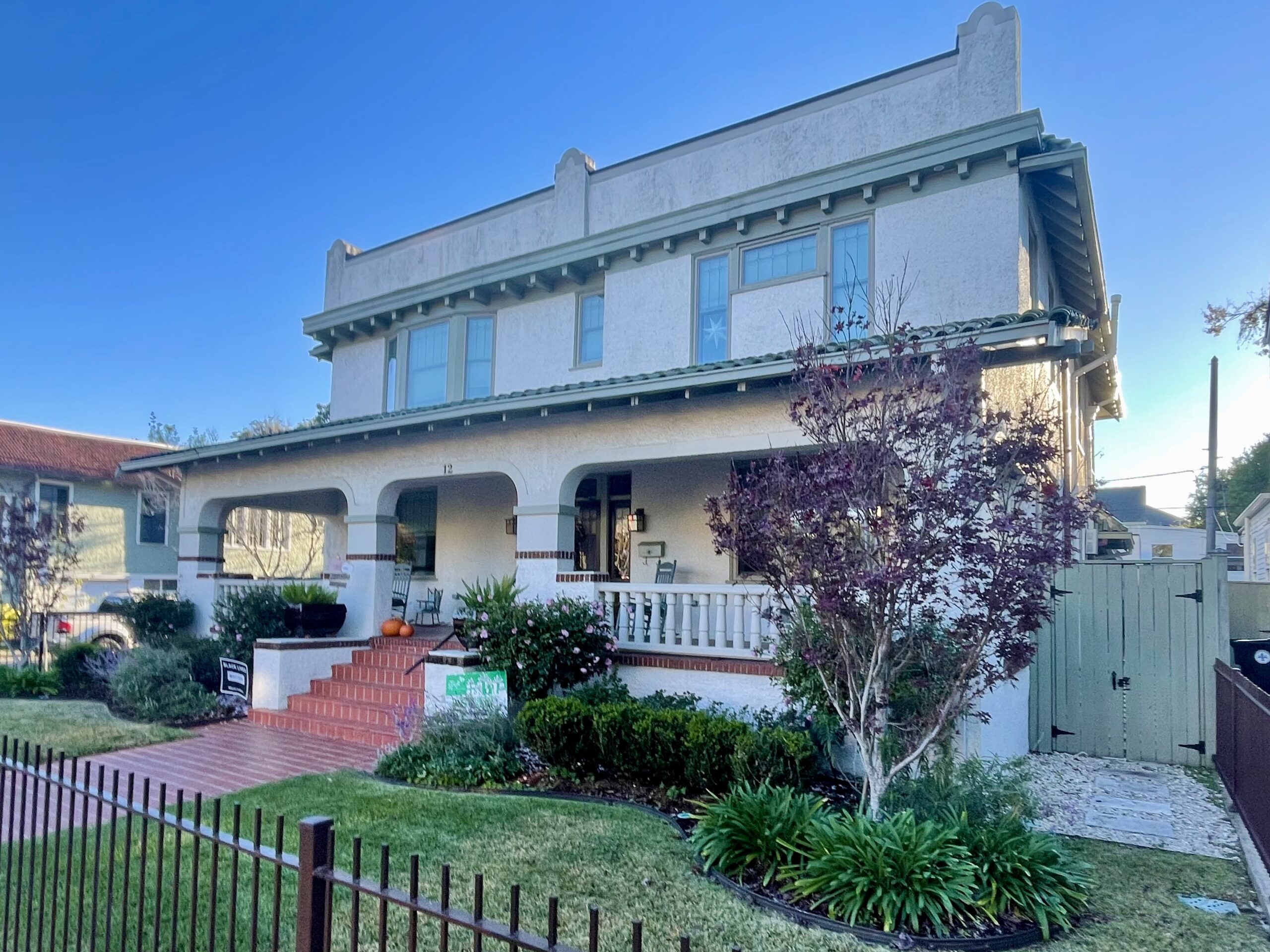Tour this home at PRC’s 48th Annual Holiday Home Tour. Click here to learn more & get tickets.
When native San Franciscans Erika and Ted Elliott started their New Orleans house hunt, they knew they wanted a historic home. That’s not hard to find in the Crescent City, Erika said, but their search initially turned up several properties that weren’t quite right.
“They were always great family houses,” she added. “So many were beautiful white, gorgeous architecture from the outside, but they’d be dark on the inside. Lots of dark wood — beautiful mahogany — but just not quite what we had in mind.”
They ultimately found what they wanted at 2618 Coliseum St., first falling in love with the Garden District location. The openness of the house also was appealing, as were the property’s expansive gardens, beautiful trees, fish fountain and private swimming pool area. Having a pool was at the top of the wish list for the couple and their two daughters.
The Elliotts bought the house three years ago and made the nearly cross-country move to be closer to family. They are the latest owners of the Greek Revival-style house, whose construction is believed to date to 1845 or 1846. A published history, written by Edith Long and titled “The Story of 2618 Coliseum,” states that the property “has had 18 known ownerships.”
The land was part of Sieur de Bienville’s holdings in colonial times, and it changed hands numerous times through the years before Louis and Armide de Saulles — he was a commission merchant and cotton factor — built the current house, according to Long’s book, which adds that “no precise legal record exists concerning the building of this dwelling.
“No architect’s name is associated with this structure; yet the excellence of its detail certainly bespeaks the trained hand, either of an architect or a gifted amateur. The classic simplicity of the plan indicates an early building date,” Long wrote.
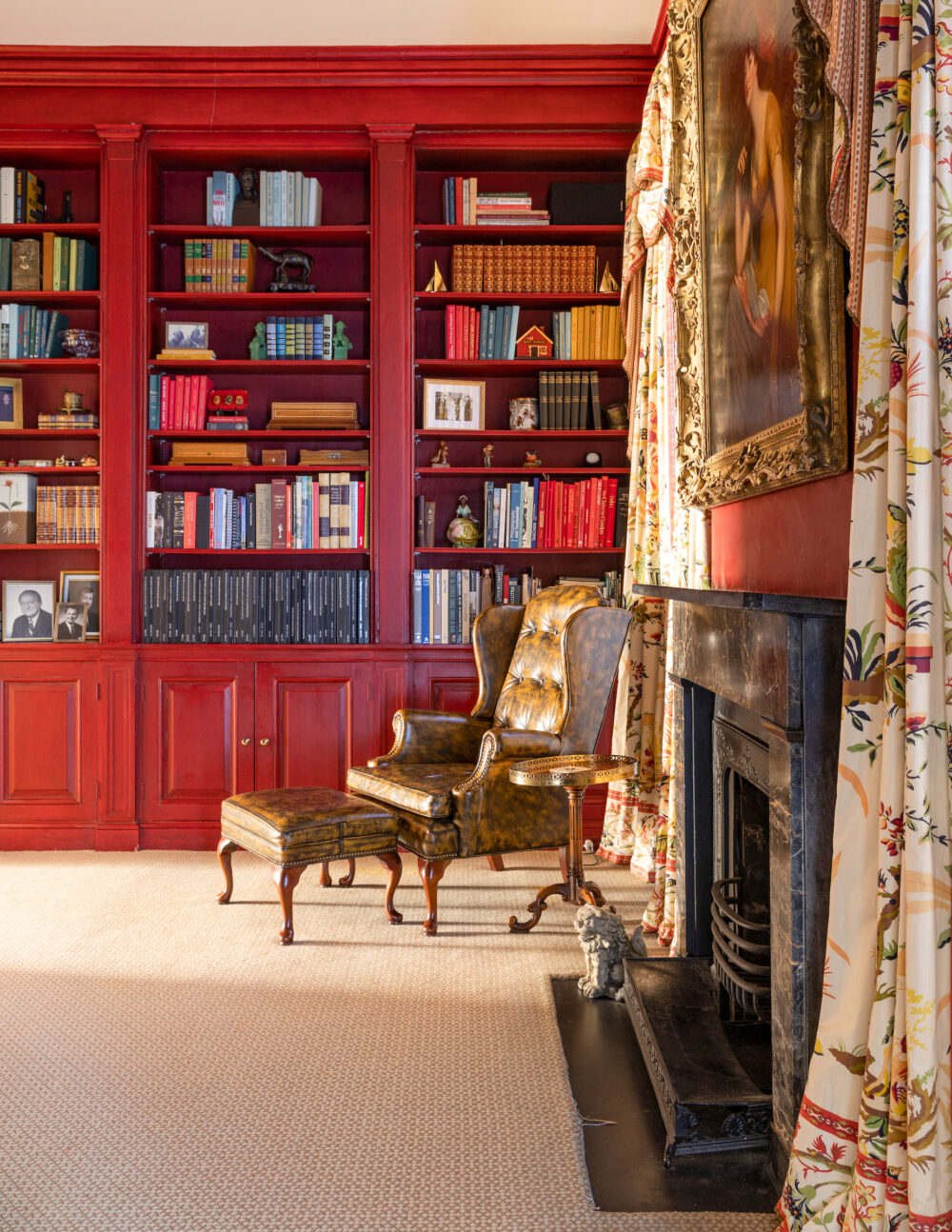
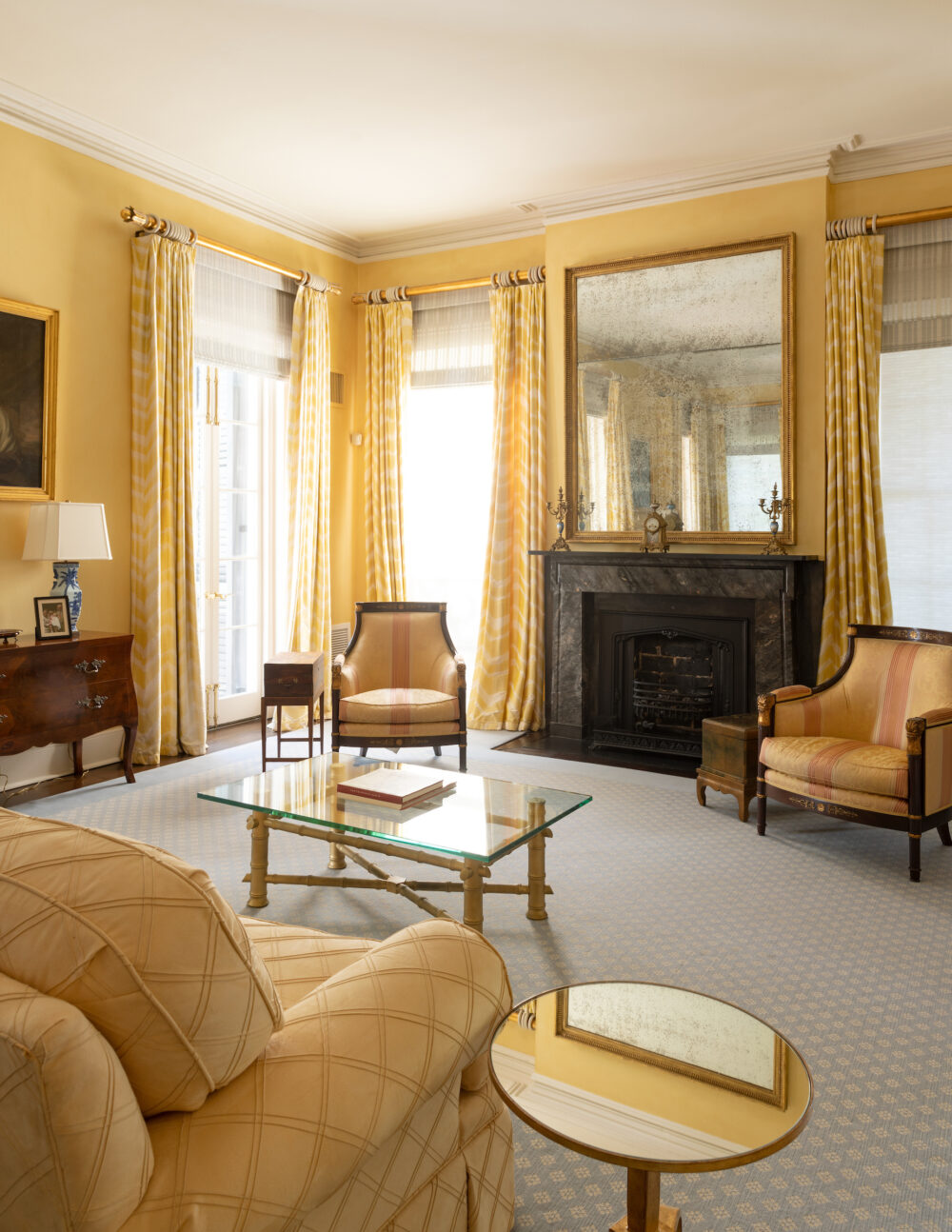
“The body of the house is a massively simple, two-story brick oblong. Double-hung windows are symmetrically arranged on its front façade,” Long continued. “Two shorter ones balance the central doorway; all the other windows are floor-length. A quiet entrance, flanked by pilasters and a well-detailed lintel, offers a restrained but agreeable welcome at the paneled doorway.”
At one end of the house, there is a double gallery with five square columns reaching up to an entablature. A dentil cornice wraps around the exterior, and there also is a flagstone terrace surrounding the house. According to Long’s book, it is believed the front entry originally was located on this side of the house but later was reoriented to the side facing Coliseum Street.
In 1853, Dr. Edouard Fortin and his wife, Amenaide, moved into the house with their two daughters. When he passed away in 1855, the family continued to live there, but facing dwindling fortunes, mortgaged it to the Merchants’ Mutual Insurance Co. in 1874. The company held the house and rented it to Amenaide and one daughter until 1887 when they moved to Birmingham.
Teachers Mary and John Seamen bought the house in 1889 to use as the location of the Southern Academic Institute, a girls’ school Mary Seamen founded and ran as its principal. The school remained in operation until 1903 when she converted it to “The Oaks,” a boarding house, after her husband’s death. It was sold by the couple’s son in 1919 to broker George Elliot Williams, who converted it back into a single-family residence. Dr. George Gordon McHardy and his family acquired the property in 1947, making further updates and installing the large pool.
In 1963, it became the home of the Historic New Orleans Collection’s founders Brig. Gen. L. Kemper Williams and his wife, Leila Moore Williams. The couple moved from the French Quarter, where they had two properties: the Merieult House on Royal Street and a late 19th-century residence contiguous to it, facing Toulouse Street. Located at 718 Toulouse St., it was their home for 17 years, during which time they amassed a substantial collection of important Louisiana artifacts.
Those artifacts became the first holdings of The Historic New Orleans Collection, which opened in the Merieult House in 1970. It was the Williams who commissioned “The Story of 2618 Coliseum,” and little is known about any structural changes to the property after their passing. There is evidence “the house was changed around for different uses,” Erika said, adding she believes the kitchens and the family room were additions to the original structure.
The expansive house now features three bedrooms, and there also are generous living spaces in the library, formal living room and dining room, as well as two kitchens. The Elliotts use one for entertaining and the other for family meals. It is adjacent to the family room, which has a wall of windows overlooking the pool and garden.
Previous owners enlisted the help of a decorator to install wallpaper and colorful paint in various rooms, Erika said, which appealed to the couple. “I just thought, ‘How wonderful to come into a home where it has been meticulously maintained, first of all.’ And every room has a different flavor or feel to it,” she added. “We walked into a beautiful, turn-key, decorated house.”
They incorporated their love of English and French antiques into the décor, finding pieces at auctions and local antique stores. They were able to marry those pieces with existing rugs and window treatments, along with some furniture, included with the home’s purchase.
It now functions perfectly for the Elliotts. “We love how comfortable it feels for being a large house,” Erika said.
Tour this home at PRC’s 48th Annual Holiday Home Tour. Click here to learn more & get tickets.
Photo gallery
Click images to expand. Photos by Sara Essex Bradley.



